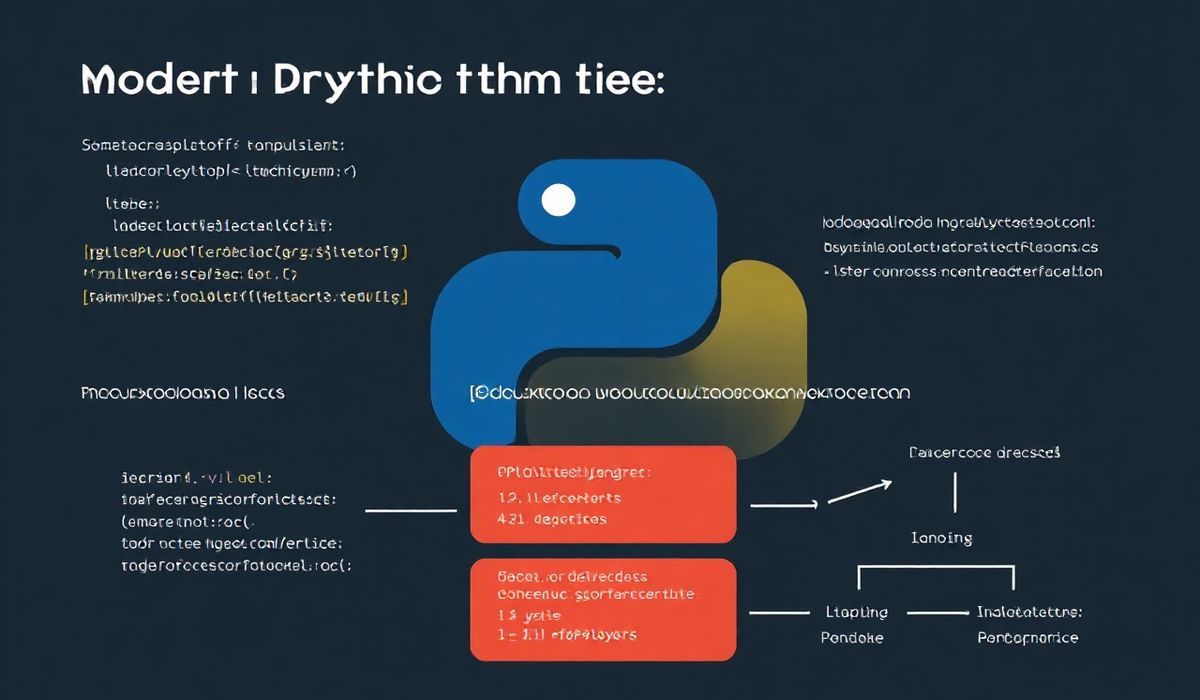PyTorch: A Deep Dive into One of the Leading Machine Learning Frameworks
PyTorch is an open-source deep learning framework developed by Facebook’s AI Research Lab. Known for its flexibility, dynamic computation graphs, and Pythonic nature, PyTorch has become one of the most popular tools for researchers, data scientists, and developers in the deep learning space. Its focus on ease of use, fast experimentation, and scalability makes it a go-to framework for both prototyping and deploying machine learning models.
Whether working on deep learning, reinforcement learning, or even computer vision and natural language projects, PyTorch simplifies model building, training, and inference with its straightforward APIs. Let’s dive into the key PyTorch APIs and create a real-world application.
Key PyTorch APIs and Their Usage
Here’s an exploration of 20+ essential PyTorch APIs, including their detailed explanations and code snippets.
1. torch.Tensor
The torch.Tensor is the fundamental building block of PyTorch. It represents a multi-dimensional array similar to NumPy arrays with automatic differentiation capabilities when used in computation graphs.
import torch # Create a simple tensor tensor = torch.Tensor([[1, 2], [3, 4]]) print(tensor) # Output: Tensor of shape (2, 2)
2. torch.from_numpy()
Converts a NumPy array into a PyTorch tensor.
import numpy as np numpy_array = np.array([1, 2, 3]) torch_tensor = torch.from_numpy(numpy_array) print(torch_tensor)
3. torch.randn()
Generates a tensor populated with random numbers from a normal distribution.
random_tensor = torch.randn(3, 4) print(random_tensor) # Random values with shape (3, 4)
4. torch.zeros()
Creates a tensor filled with zeros of the specified shape.
zero_tensor = torch.zeros(2, 3) print(zero_tensor)
5. torch.ones()
Creates a tensor filled with ones of the specified shape.
ones_tensor = torch.ones(2, 3) print(ones_tensor)
6. torch.matmul()
Performs matrix multiplication.
a = torch.tensor([[1, 2], [3, 4]]) b = torch.tensor([[5, 6], [7, 8]]) result = torch.matmul(a, b) print(result)
7. torch.autograd.grad()
Computes gradients for tensors involved in computations that require gradients.
x = torch.tensor(2.0, requires_grad=True) y = x ** 2 # Compute the gradient y.backward() print(x.grad) # Gradient at x=2.0
8. torch.nn.Module
The base class for all neural networks in PyTorch. You inherit from this class when defining models.
import torch.nn as nn
class SimpleModel(nn.Module):
def __init__(self):
super(SimpleModel, self).__init__()
self.fc = nn.Linear(2, 1)
def forward(self, x):
return self.fc(x)
model = SimpleModel()
print(model)
9. torch.nn.Linear
Applies a linear transformation to the input data.
linear_layer = nn.Linear(3, 2) x = torch.randn(1, 3) # Batch size of 1, input size 3 output = linear_layer(x) print(output)
10. torch.nn.ReLU
Applies the Rectified Linear Unit (ReLU) activation function.
relu = nn.ReLU() x = torch.tensor([-1.0, 0.0, 1.0]) output = relu(x) print(output) # Output: [0.0, 0.0, 1.0]
11. torch.optim.SGD
Implements the Stochastic Gradient Descent optimization algorithm.
optimizer = torch.optim.SGD(model.parameters(), lr=0.01)
12. torch.nn.CrossEntropyLoss
Defines the cross-entropy loss function for classification tasks.
criterion = nn.CrossEntropyLoss() output = torch.tensor([[2.0, 1.0, 0.1]]) # Prediction logits target = torch.tensor([0]) # Ground truth loss = criterion(output, target) print(loss)
13. torch.cuda.is_available()
Checks if a CUDA-compatible GPU is available.
if torch.cuda.is_available():
device = torch.device('cuda')
print("CUDA is available. Using GPU.")
else:
device = torch.device('cpu')
print("Using CPU.")
14. torch.save() and torch.load()
Used to save a model and load it later.
# Save
torch.save(model.state_dict(), 'model.pth')
# Load
model.load_state_dict(torch.load('model.pth'))
15. torch.DataLoader
Provides an iterable over a dataset for training and evaluation.
from torch.utils.data import DataLoader, Dataset
class RandomDataset(Dataset):
def __len__(self):
return 100
def __getitem__(self, index):
return torch.randn(1), torch.tensor(1)
dataset = RandomDataset()
loader = DataLoader(dataset, batch_size=10)
for data, target in loader:
print(data.shape, target.shape)
16. torchvision.transforms
Preprocessing utilities for image data.
from torchvision import transforms
transform = transforms.Compose([
transforms.Resize((32, 32)),
transforms.ToTensor()
])
17. torch.nn.Sequential
A sequential container to stack layers conveniently.
model = nn.Sequential(
nn.Linear(2, 4),
nn.ReLU(),
nn.Linear(4, 1)
)
18. torch.no_grad()
Disables gradient calculation (useful during inference).
with torch.no_grad():
output = model(torch.randn(1, 2))
print(output)
19. torch.cat()
Concatenates tensors along a given dimension.
a = torch.randn(2, 3) b = torch.randn(2, 3) result = torch.cat((a, b), dim=0) print(result.shape) # Output: (4, 3)
20. torch.argmax()
Returns the index of the maximum value in a tensor.
x = torch.tensor([1.0, 2.5, 0.3]) max_index = torch.argmax(x) print(max_index) # Output: 1
21. torch.split()
Splits a tensor into chunks.
x = torch.arange(10) print(torch.split(x, 3)) # Splits into chunks of size 3
22. torch.nn.BatchNorm2d
Applies batch normalization for 2D inputs.
bn = nn.BatchNorm2d(3) x = torch.randn(1, 3, 4, 4) # Batch size 1, 3 channels, 4x4 image output = bn(x)
Generic Application Binary Classification
Here’s a complete example of a PyTorch application using many of the APIs we’ve explored above.
import torch
from torch import nn, optim
from torch.utils.data import DataLoader, Dataset
# Define Random Dataset
class RandomDataset(Dataset):
def __len__(self):
return 1000
def __getitem__(self, idx):
x = torch.randn(2)
y = 1 if x.sum() > 0 else 0 # Label based on sum
return x, y
# DataLoader
dataset = RandomDataset()
loader = DataLoader(dataset, batch_size=32, shuffle=True)
# Define Model
class BinaryClassifier(nn.Module):
def __init__(self):
super(BinaryClassifier, self).__init__()
self.model = nn.Sequential(
nn.Linear(2, 4),
nn.ReLU(),
nn.Linear(4, 1),
nn.Sigmoid()
)
def forward(self, x):
return self.model(x)
model = BinaryClassifier()
# Define Loss and Optimizer
criterion = nn.BCELoss() # Binary Cross Entropy Loss
optimizer = optim.SGD(model.parameters(), lr=0.01)
# Training Loop
for epoch in range(5):
for data, target in loader:
target = target.float().unsqueeze(1)
optimizer.zero_grad()
output = model(data)
loss = criterion(output, target)
loss.backward()
optimizer.step()
print(f"Epoch {epoch+1}, Loss: {loss.item()}")
# Inference
with torch.no_grad():
sample = torch.tensor([[0.5, -1.2]])
pred = model(sample)
print("Prediction:", pred)
Conclusion
PyTorch is an extremely versatile and beginner-friendly framework for deep learning and beyond. By mastering its key APIs and concepts, from tensors to nn.Module, you can build powerful machine learning models efficiently. The example application above showcases how PyTorch APIs are used to create a binary classifier, demonstrating the ease and elegance of PyTorch. Now you’re one step closer to leveraging PyTorch for your next AI project! 🚀




